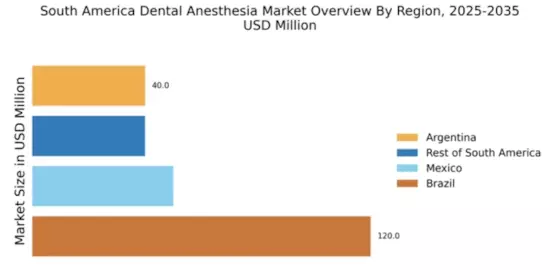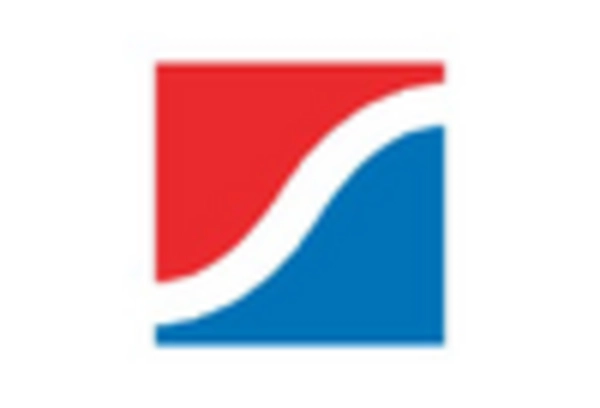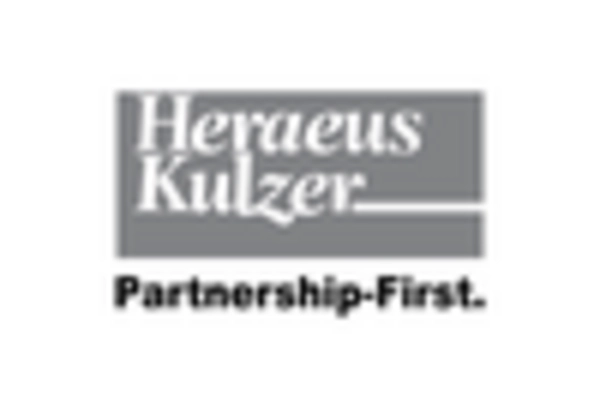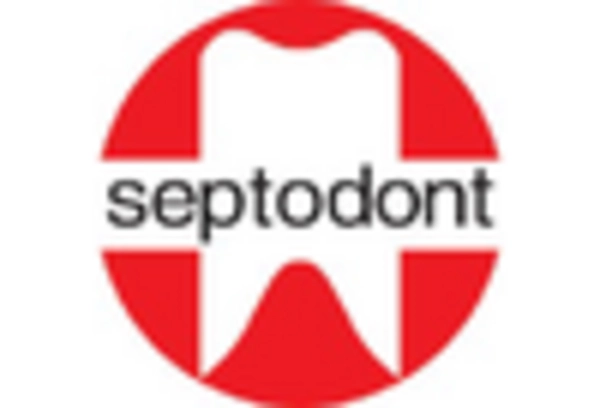Rising Geriatric Population
The increasing geriatric population in South America is a significant driver for the dental anesthesia market. As the elderly demographic grows, there is a corresponding rise in dental issues that require surgical intervention, such as extractions and implants. This population often has unique anesthesia needs due to comorbidities, necessitating specialized dental anesthesia solutions. Reports indicate that the geriatric population in South America is expected to reach 20% of the total population by 2030, which will likely increase the demand for dental services and, consequently, anesthesia. The dental anesthesia market must adapt to these demographic changes by offering tailored solutions that address the specific needs of older patients, ensuring their safety and comfort during dental procedures.
Increasing Dental Procedures
The rising number of dental procedures in South America is a crucial driver for the dental anesthesia market. As dental health awareness increases, more individuals seek preventive and corrective treatments. This trend is reflected in the growing demand for dental services, which has been reported to increase by approximately 10% annually in various South American countries. Consequently, the need for effective anesthesia solutions becomes paramount to ensure patient comfort and satisfaction during these procedures. The dental anesthesia market is likely to benefit from this surge in dental visits, as practitioners require reliable anesthesia options to manage pain effectively. Furthermore, the expansion of dental clinics and practices across urban and rural areas contributes to the overall growth of the market, as more patients gain access to necessary dental care.
Advancements in Anesthetic Agents
Innovations in anesthetic agents are significantly influencing the dental anesthesia market in South America. The development of new, safer, and more effective anesthetics enhances the overall patient experience and reduces recovery times. For instance, the introduction of local anesthetics with fewer side effects has been noted to improve patient satisfaction rates, which can exceed 85% in some studies. These advancements not only facilitate smoother dental procedures but also encourage more patients to seek treatment, thereby expanding the market. The dental anesthesia market is poised to grow as these innovative agents become more widely adopted by dental professionals. Additionally, the ongoing research and development efforts in this field suggest a promising future for enhanced anesthetic options, which could further drive market expansion.
Regulatory Support for Dental Practices
Supportive regulatory frameworks in South America are fostering growth in the dental anesthesia market. Governments are increasingly recognizing the importance of dental health and are implementing policies that promote access to dental care. This includes regulations that facilitate the establishment of dental clinics and the training of professionals in anesthesia administration. For instance, recent initiatives have aimed to streamline the licensing process for dental practitioners, which can lead to an increase in the number of qualified professionals offering anesthesia services. The dental anesthesia market stands to benefit from these regulatory changes, as they create a more favorable environment for dental practices to thrive. Enhanced access to dental care is likely to drive demand for anesthesia solutions, further propelling market growth.
Integration of Technology in Dental Practices
The integration of technology in dental practices is transforming the landscape of the dental anesthesia market in South America. Advanced technologies, such as digital imaging and computer-assisted anesthesia delivery systems, are becoming more prevalent in dental clinics. These innovations not only improve the precision of anesthesia administration but also enhance patient safety and comfort. Reports suggest that clinics utilizing such technologies experience a reduction in procedural anxiety among patients, which can lead to higher treatment acceptance rates. The dental anesthesia market is expected to grow as more practitioners adopt these technologies, recognizing their potential to improve outcomes and streamline operations. As technology continues to evolve, it may further influence the types of anesthesia solutions offered, catering to the needs of modern dental practices.


















Leave a Comment